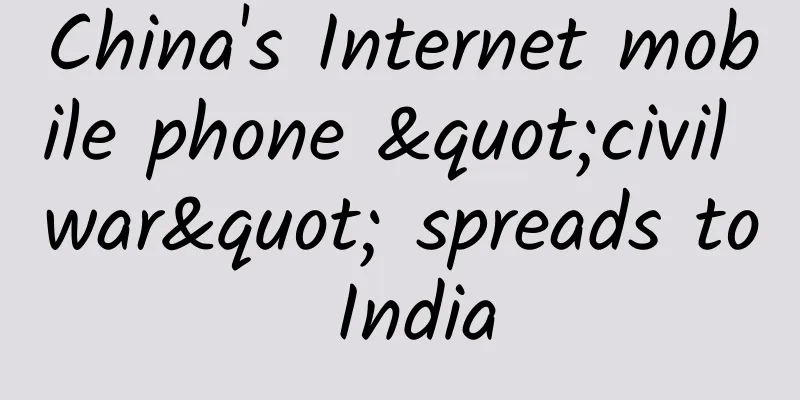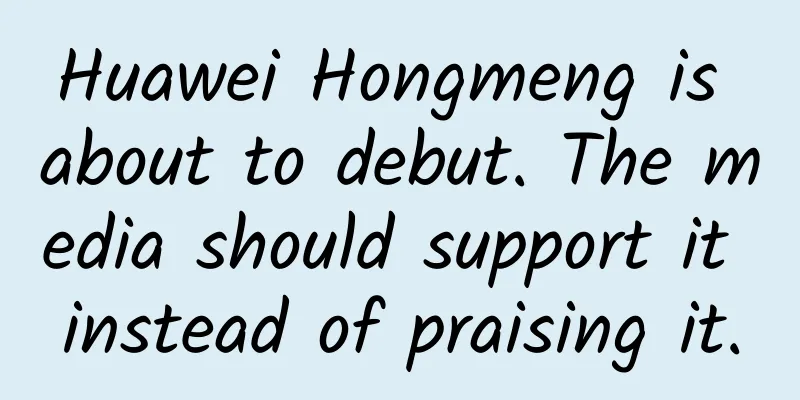China's Internet mobile phone "civil war" spreads to India

|
Xiaomi's "Internet phone" concept has triggered a trend of imitation and follow-up in the Chinese mobile phone industry. Major mobile phone manufacturers such as Huawei, Coolpad, Lenovo, and ZTE have established independent Internet brands. In 2014, the price war and configuration war of Internet phones became a bright spot in the competition in the Chinese smartphone market. Tencent Technology has noticed through Indian e-commerce and other channels that the flames of the "civil war" of Chinese Internet mobile phones have spread to India. Chinese brands dominate the best-selling list of Indian Internet mobile phones, and at the same time, Google 's low-cost Android phone plan "Android One" has been completely disrupted. Dominating the Indian popularity charts Although the entire screen is in English, when people look at the mobile phone category page of Flipkart, a first-tier Indian e-commerce website (equivalent to the Indian version of Tmall), they will have the illusion that this is not an Indian e-commerce website, but more like the "English version" of a Chinese mobile phone e-commerce website. In the "by brand" purchase navigation, Flipkart lists the top ten best-selling brands. If Motorola Mobility , which has been acquired by Lenovo Group , is included, there are six brands from China in the top ten brands, ranking first to sixth. They are Motorola, Xiaomi, Huawei Honor, Asus, Lenovo, and Alcatel (under TCL). If the brand list doesn’t explain the problem enough, then looking at Flipkart’s smartphone popularity list (ranked by popularity), you will once again find the reality of Chinese brands dominating or even “monopolizing”. According to Tencent Technology's recent observations, Xiaomi's Redmi 1S has been at the top of the list of popular mobile phones, followed by Lenovo's Motorola's Moto G and Moto E, Huawei's Honor C3 Play Edition in third place, and Asus' Zenfone 5 in fifth place. In other words, the top five best-selling smartphones are all Chinese brands. In addition, a high-end Lenovo model is also ranked in the top ten. It is not difficult to find in the popularity list that the top ranked ones are almost all cost-effective Chinese Internet mobile phones priced at around US$100 (US$100 is approximately 6,325 Indian rupees). For example, the Redmi 1S is priced at 5,999 rupees, equivalent to 590 yuan, the Honor Play Edition (named Huawei Honor Holly in India) is priced at 6,999 rupees (16GB of body storage), equivalent to 688 yuan, and the Motorola Moto E is also priced at 6,999 rupees in India. In addition, Asus' Zenfone4 is priced at only 5,499 rupees, equivalent to 540 yuan. It can be seen that Chinese brands are also engaged in the same "599" and "699" wars in the Indian mid- and low-end Android phone market as in China. In Flipkart's popularity list, Micromax, which is said to be India's largest domestic smartphone brand, ranks only eighth with its cheap phone priced at 6,476 rupees, and is no match for Chinese Internet phones. Google's cheap phone plans disrupted The performance of the Indian smartphone market is completely consistent with what foreign media have observed and analyzed. That is, Chinese mobile phone manufacturers are relying on their high cost-performance advantages to not only erode the market share of South Korea's Samsung Electronics in China , but also snatch Samsung's target users in emerging markets around the world. In the field of mid- and low-end mobile phones, Chinese manufacturers not only have a complete advantage, but also have defeated another giant that coveted cheap mobile phones in emerging markets - Google. Although Android dominates the market in China and other markets, relying on the open source nature of Android, most Chinese manufacturers have deleted Google's application services and Play digital content retail platform and instead implanted their own software stores and content systems. In this process, Google played the role of a "living Lei Feng" and did not make a penny from the Android boom in China. After learning from the lessons of the Chinese market, Google launched a plan called "Android One" in developing countries, which is to cooperate with local manufacturers to launch cheap Android phones, and Google is responsible for the operating system and application software (including subsequent updates). In India, Google also cooperated with mobile operators to launch a plan for free data traffic for application downloads . The first stop of the "Android One" plan is India, and Google plans to promote it to Southeast Asian countries such as Indonesia in the future. However, the rise of China's cost-effective "Internet phones" has almost completely frustrated Google's "Android One" plan. Indian media have previously reported that the Android One phones launched by three Indian companies have performed mediocrely because their price-performance ratio is not as good as that of phones from Chinese manufacturers. Tencent Technology also noticed that in Flipkart's list, the highest-ranked Android One phone is a product from India's Spice company, priced at 6,499 rupees and ranked only eighth. The price-performance ratio of Android One phones is completely incomparable to that of Redmi and Honor Play Edition. Take the Spice phone mentioned above as an example. It is priced higher than Redmi, but has a 4.5-inch screen with a resolution of only 854*480 and a rear camera of only 5 megapixels. The battery capacity is only 1700 mAh. Industry insiders have pointed out that due to its low cost-performance ratio, Google's Android One phones cannot compete with China's mid- and low-end phones in the Indian market. Not only can Google's Android One plan not enter China, but its competitiveness and development prospects in other regions such as Southeast Asia are also slim. A large number of Internet phones are still emerging In the competition of Internet mobile phones in China in 2014, the battle between Xiaomi and Huawei (the cost-effective mobile phones are Redmi and Honor Play Edition) attracted much attention. Whether in Tmall's Double Eleven promotion or in the Indian market, Xiaomi and Huawei have already taken the lead. There is even more unfavorable news for local Indian mobile phone manufacturers and potential partners of Google Android One in other parts of the world - Chinese Internet mobile phone brands are still emerging. Lenovo has successfully secured a place in the overseas cheap mobile phone market with Motorola's Moto E. However, Lenovo's Internet mobile phone strategy was a little late in China. In the last month of 2014, Lenovo Group's Internet mobile phone brand "Lemon" officially offered pre-orders for its first cost-effective mobile phone on JD.com, priced at only 599 yuan. It is reported that the configuration of Lenovo's first Internet mobile phone is comparable to that of Redmi, Honor Play, and ZTE V5S. Lenovo obviously wants to occupy the "first-line" position it deserves in the Internet mobile phone market. Coolpad, another company with the ability to compete in cross-border markets, also announced at the end of the year that it would jointly operate the "Dashen" brand of Internet mobile phones with Qihoo 360. Qihoo 360, which failed in its first Internet mobile phone plan ("specially supplied mobile phones"), injected $400 million in funding this time. The industry generally believes that Qihoo 360, which excels in PC security software, does not want to be marginalized in the mobile Internet era and intends to find sustainable development space for security products through a single brand of Internet mobile phones. Due to its large population and similar national conditions to China, India is often the first stop for many Chinese mobile phone brands to go global. With the initial success of the "Chinese Army" in India and the increasingly crowded Internet mobile phone market in China, we will see Chinese brands dominate the mobile phone popularity lists in more countries. As a winner of Toutiao's Qingyun Plan and Baijiahao's Bai+ Plan, the 2019 Baidu Digital Author of the Year, the Baijiahao's Most Popular Author in the Technology Field, the 2019 Sogou Technology and Culture Author, and the 2021 Baijiahao Quarterly Influential Creator, he has won many awards, including the 2013 Sohu Best Industry Media Person, the 2015 China New Media Entrepreneurship Competition Beijing Third Place, the 2015 Guangmang Experience Award, the 2015 China New Media Entrepreneurship Competition Finals Third Place, and the 2018 Baidu Dynamic Annual Powerful Celebrity. |
<<: Prominent startup investor: Apple Watch is doomed to fail
>>: Outlook for the giants in 2015: Apple continues to make money while Samsung faces crisis
Recommend
The most comprehensive and in-depth Zhihu traffic marketing encyclopedia
Did you know: What kind of brands are suitable fo...
Why is Lei Jun so anxious to launch the top-end version of Xiaomi NOTE?
Not long after the launch of Xiaomi Note, a top-e...
5 minutes to show you how to play with App automation testing
Preface App automated testing has always been a f...
Why is there negative growth in telecom users?
According to China Telecom's performance, the...
30 Unforgettable HTML 5 Templates
In today's world, content management systems ...
Electric Technology Car News: The former leader of independent brands has become a sports-oriented student. Will the Pentium X80 be recognized when it steps into the examination room again?
When it comes to FAW Group's own brands, in a...
Short video monetization system private training course produced by Director Chen
Brief introduction of the short video monetizatio...
Behind the rapid development of AI big models, is sustainable development achieved through “green computing”?
Currently, artificial intelligence (AI) has been ...
2021 Double 11-KOL Marketing Preparation Strategy Insights and Resources
The release of Double 11 commercial content is co...
China Telecom lamented: China Mobile is really rich
People familiar with the matter revealed that for...
How to strengthen the prevention and control of respiratory diseases in winter? How do microorganisms cause and spread diseases? Here comes the authoritative answer →
Winter is the season with the highest incidence o...
Take some melatonin when you can't sleep? 4 misunderstandings about insomnia medication, experts from West China University of Political Science and Law urge you to be cautious!
Facing the epidemic, Chengdu people are very stub...
"Food Safety Guide" Series | Chinese medicine says tea, are you drinking it right?
When I was a kid, I only heard of two kinds of te...
How to use data to drive product operations at different stages of product development?
Operational positions in Internet companies are g...
Summary of operations related to WinPhone development database
1. First of all, let's talk about WP's su...









